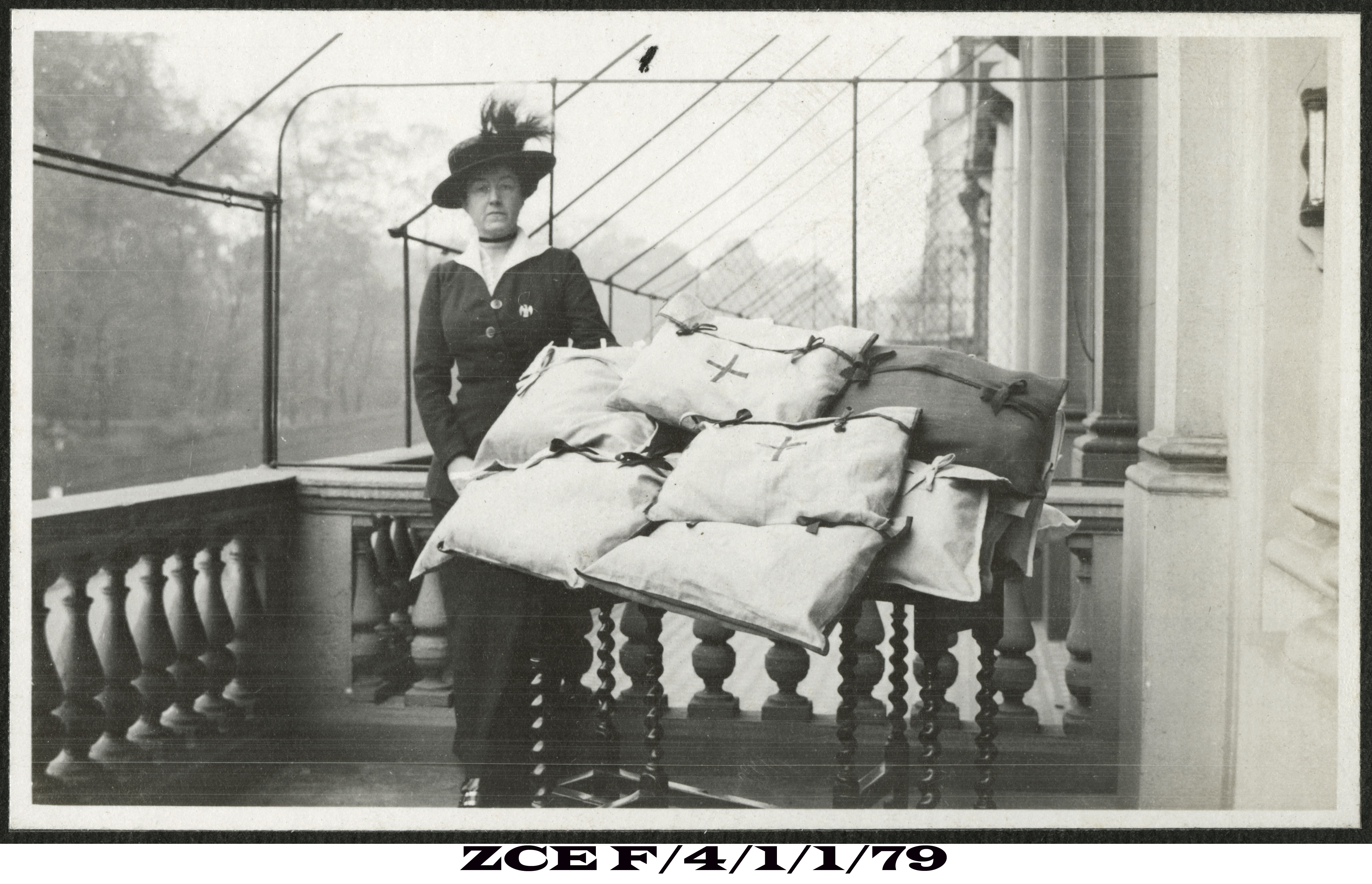
Alice was born Alice Mary Campbell in 1866 in Glendaruel, Argyll, the youngest child of Archibald Campbell, Captain of the 42nd Highlanders, and his second wife, Christina Maclaren. Alice’s brother, William, was an officer in the Black Watch, and had served in South Africa, alongside Ralph Henry Carr-Ellison, Alice’s future husband. Ralph mentioned Alice in his letters home from Bechuanaland (now Botswana), Africa, where he was serving in the British Bechuanaland Police – a border police force. When he returned home in the Autumn of 1892, their engagement was announced.
They were married at St. Peter’s Parish Church, Cranley Gardens, London, on 28 February 1893. Ralph was stationed in York at the time of their marriage, and the couple lived there for a time, before Ralph was posted to Ireland. Their only child, John (Jock) Campbell Carr-Ellison, was born on 25 September 1897, at 4 Walton Street, London. Alice was to leave her son when he was two years old, to follow her husband to South Africa. She set sail on the S.S. Norman not long after her husband sailed in 1899.
While Ralph was on campaign, Alice was left very much to her own devices, often for months at a time. She would visit recent battlefields with friends, and she threw herself into the lively social scene. Based firstly in Cape Town, she visited the sick and injured who had been sent back to the city after the battle at Magersfontein. In January 1900, Alice made her way to Pietermaritzburg and again became involved in caring for the sick and wounded, and was asked to join the nursing staff. Ralph did not approve, so Alice compromised; she carried on visiting the patients while acting as a voluntary nurse to those soldiers who were convalescing.
After almost three years in South Africa, on 2 July 1902, Alice set sail for Britain on the Dunottar Castle, even though she lacked the necessary permit for her passage, and brought two illegal immigrants (meerkats!) on board with her. On 28 July, Alice landed at Callart, Invernesshire, and was reunited with her son, Jock, at Fort William. By this time he was five years old.
Ralph had wanted to travel to Hong Kong after his return to England. Alice was more than willing to travel with him – she was as adventurous as he was – but her health deteriorated and the plans were forgotten. The couple moved to Guernsey in 1906, when Ralph was made Deputy Governor of the island. Their time on the island came to an end in 1910 and they embarked on a world tour, visiting Cairo and India along the way, only returning to Hedgeley in October 1913.
During the First World War, Alice organised working parties at her home in 41 Princes Gate, London, making articles for those at the Front. When Ralph and Alice moved to Dublin she became involved in many welfare committees to improve conditions for soldiers and their families. She organised food and tobacco parcels to be sent to the men at the front and those in prisoner of war camps. She also formed a workshop for disabled soldiers, where they could make artificial limbs, giving them the chance to earn a wage and support their families.
In 1917, Alice did even more for the national war effort by turning Dunston Hill House, Gateshead, into an after-care home, catering for 45 disabled soldiers and sailors at a time. The house was in a peaceful, countryside location, but was close enough to Newcastle to make it accessible.

Dunston Hill House was taken over by the Northumberland War Pensions Committee, and used especially for neurasthenic cases – men suffering from the stress they had experienced in the trenches. Alice was elected a member of the Committee that would run the Home, and was instrumental in planning the alterations and additions that would make a home into a hospital.
During the War, Princes Gate became a gathering place for servicemen, and Hedgeley became an unofficial rest and recreation centre for disabled officers. Both houses were for the use of overseas troops – the South African, Canadian, Australian and New Zealand forces.
In September 1921, at the age of fifty-five, Alice died of pneumonia at her home in London. Her cremation took place at Golder’s Green, and the ashes were interned in Eglingham churchyard on 14 September, after a memorial service that was attended by family, friends, local dignitaries and estate tenants from Northumberland and Durham. Mr. G. Hemming, the Head Gardener at Hedgeley, lined the burial vault with laurel and flowers from the gardens of Hedgeley Hall.

